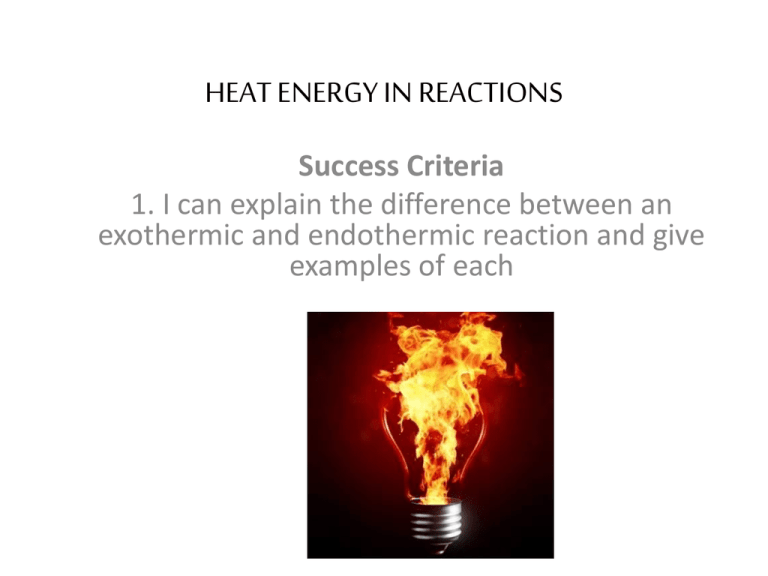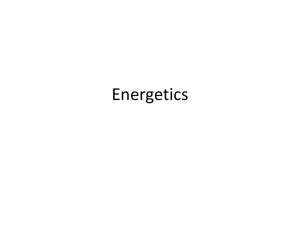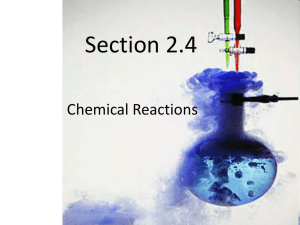heat energy in reactions
advertisement

HEAT ENERGY IN REACTIONS Success Criteria 1. I can explain the difference between an exothermic and endothermic reaction and give examples of each STARTER • Compare the electrical conductivity of the 4 solid types: ionic, molecular, giant covalent network and metallic • Give a detailed explanation for each type HEAT 1. What is heat? 2. Describe the way it travels TYPES OF HEAT REACTIONS • Exothermic = release of heat energy into surroundings • Endothermic = absorption of heat energy from surroundings PRACTICAL • Practical 11.1 p138 STARTER • You have a beaker of water Describe what • An endothermic reaction will do to it and why • An exothermic reaction will do to it and why WHERE DOES THE ENERGY COME FROM? • Bond making requires energy = ENDOTHERMIC • Think about freezing water, what kind of bonds (attraction) are we making? • Bond breaking releases energy = EXOTHERMIC • Think about boiling water, we overcome intermolecular bonds (attraction) which is released as heat • Exothermic = energy to break bonds > energy to make bonds • Endothermic = energy to make bonds > energy to break bonds COMBUSTION • All combustion reactions are exothermic • They release heat COMBUSTION OF HYDROGEN 2H2 + O2 2H2O • Bonds broken = • Bonds made = • Energy of bonds broken > energy of bonds made COMBUSTION OF METHANE CH4 + O2 CO2 + 2H2O • Bonds broken = • Bonds made = ENTHALPY • Enthalpy is the term for the heat energy in a substance due to kinetic energy of particles and potential energy of bonds • It has the symbol H • We measure enthalpy change between REACTANTS and PRODUCTS • Remember P comes before R in the alphabet ENERGY DIAGRAMS • • • • Exothermic Hr > Hp H = Hp – Hr H = negative • • • • Endothermic Hp > Hr H = Hp – Hr H = positive ACTIVATION ENERGY HOMEWORK • Read p138-139 • Do 11A Energetic Reactions on p140






